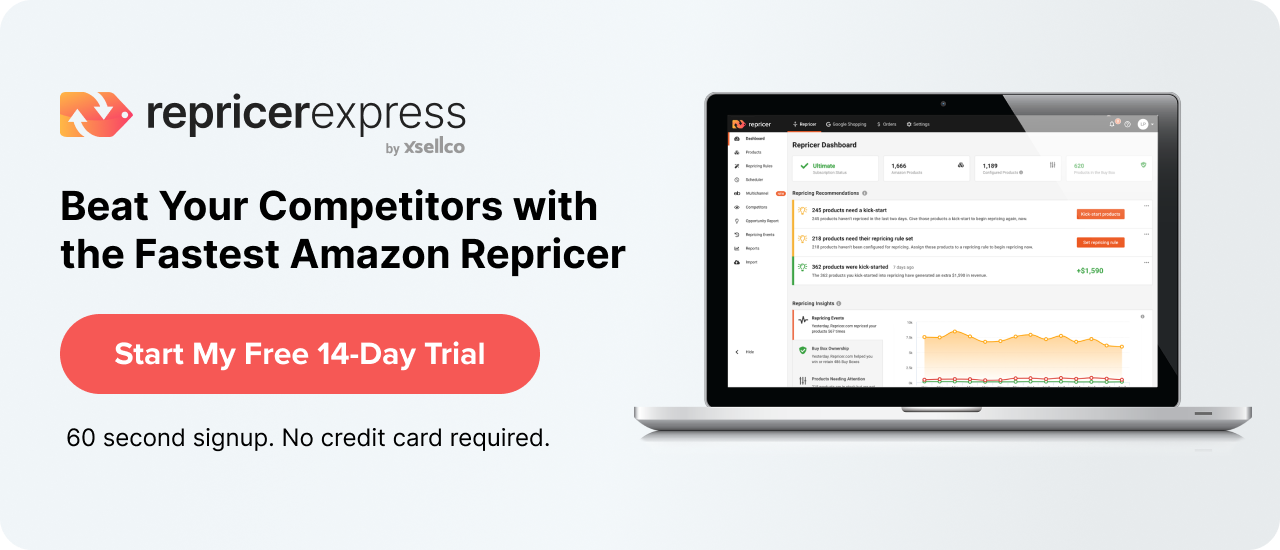Guest post by Victoria Greene, Brand Marketing Consultant and Freelance Writer
So, you’re selling on Amazon and making enough money to get by. But do you want to take your ecommerce enterprise to the next level? There’s always room for improvement, and there are new tips and tricks that you can implement to rapidly boost the conversion rates of your products.
From product videos to fine-tuning your sales copy, this article will give you some real food for thought. Let’s see whether you pass our test, or if you need a little bit more guidance to get you there.
1. Do Your Product Listings Feature Videos?
It’s official: product videos are the new big thing on all ecommerce stores, from Amazon to custom-builds. Approximately 60% of marketers are currently using video, and 73% plan to increase their usage. And with good reason – viewers are anywhere from 64-85% more likely to buy a product after watching a video accurately describing or displaying its features. With such a brilliant opportunity to boost your conversion rate, now is the time to put a video marketing strategy into place.
It can be tricky to get video content on your Amazon listings without paying the hefty price tags demanded by the only third-party supplier, AMZ videos. However, there are ways that you can upgrade your products from ‘Average Joe’ listings to enhanced ones. If your items have a high conversion rate, you will likely receive an automated email from the Amazon product category manager. This email will offer you the option of joining Amazon’s coveted ‘Vendor Central’. If you just can’t wait, you can apply manually here. This involves Amazon becoming a full-time distributor of your products, and grants you greater flexibility with your product listings, including the chance to upload product videos. Take a look at this Paris Sunday dress to see what they look like for yourself.
If you’re in need of a little more direction with the Vendor Central application, this guide will answer any questions you may have.
2. Have You Fine-Tuned Your Sales Copy?
Getting your product listings to rank based on Amazon’s organic search algorithms is very different to ranking a product or brand on Google SERPs. While Google claims that it prioritizes the user experience, Amazon ranks according to conversion rates. Amazon frequently rearranges its search results to sell more products, therefore you should prioritize improving your conversion rates and boosting sales. More conversions = more money for Amazon.
When attempting to rank your listings on Amazon, you should always remember that the bulk of search traffic comes from internal site searches. Amazon doesn’t penalize you for using the exact same title, bullets, description and images as another website. What they care about is that your products sell.
The best way to ensure that you are using powerful sales copy and that your product descriptions are convincing customers to convert is to do your research. You should first analyze your competitors’ products: what terminology and structure do they use for their Amazon listings? Is there anything that you could learn from them? Have a go using a few relevant search terms, pick the top 10 results, and scrutinize how they market their products. Don’t be afraid to use their product listings as a template to boost your sales.
Here are a few key points to bear in mind when perfecting your product listings on Amazon:
- Amazon has suppressed listings with titles of over 200 characters. Be concise, or this could affect your rankings
- Amazon’s Sponsored Products Tool is one of the best ways for you to research which keywords are most relevant for your product
- Never underestimate the power of bullet points when displaying the features and benefits of your product. These are easy to read and digest, and are often the first thing readers will look for
If you have a niche product, or you want to go into more detail to perfect your product listing, you could always use Google’s Keyword Planning tool and KeywordTool.io to find the most relevant search terms that your target audience is using. Amazon and Google may work very differently, but chances are that users of both are using similar search terms. For more details on how to hit the nail on the head with SEO for Amazon, take a look at this helpful article from Moz.
Have you considered supplementing your Amazon income with a hosted online store? Branching out and adopting an omnichannel selling strategy is the key to success. One of the market leaders is Shopify, a SaaS store builder that gives you greater flexibility and a chance to build up your own brand equity. Doing this can be a great way to get your product offering noticed.
One way that Shopify allows you to fine-tune your SEO is by editing individual image titles and alt text for each of your products. You have the option to produce compelling alt text descriptions that accurately describe your image, and you can even plug some relevant keywords in there. These will be read by search engines and add to your overall chances of reaching the prized spots on SERPs.
Clear and concise product listings are vital, no matter where you choose to sell. If you’re an Amazon seller, don’t be afraid to take inspiration from your competitors. And remember, using relevant keywords and terminology that are similar to your customers’ searches are the way to boost your conversion rates.
3. Have You Harnessed the Power of Customer Reviews?
Customer reviews are really important. In fact, 88% of consumers say that they trust online reviews as much as personal recommendations.
As discussed, the higher your conversion rate, the higher your items will rank on Amazon searches. Chances are that the rubber ducks in the middle of this Amazon results page will have a far lower conversion rate than the competitor products above and below. If you want to get yourself ranking and simultaneously boost your sales, you should focus on obtaining customer reviews.
Unfortunately, around 90% of Amazon buyers fail to leave feedback after making a purchase. You could get around this by employing a service like FeedbackExpress to manage your feedback and send emails to your customers, requesting that they respond with a star rating and comments. This proactive strategy will rapidly increase the volume of your submitted feedback, and ensure that your rubber duck is not a sitting duck.
Nobody can yet pinpoint exactly how much customer reviews directly affect Amazon rankings. Amazon is equally as secretive about its algorithm as Google is. Despite this, it is still worth focusing on getting those glowing reviews from happy customers to encourage new ones to trust you and make a purchase.
If you can tweak your online store to pass this test, you will be well on your way to becoming an Amazon extraordinaire. Perhaps it’s time for you to branch out into different ways of selling online? Consider investing in a custom-designed online store or an ecommerce builder service to really take your brand to the next level.
Related: 5 Insider Tips to Help You Grow Your Amazon Business
About the Author:
 Vicky is an ecommerce marketing consultant and freelance writer, helping a range of brands spread their wings. She loves sharing her knowledge with other entrepreneurs and small businesses to help them get to the next level. She also runs her own blog over at VictoriaEcommerce.com
Vicky is an ecommerce marketing consultant and freelance writer, helping a range of brands spread their wings. She loves sharing her knowledge with other entrepreneurs and small businesses to help them get to the next level. She also runs her own blog over at VictoriaEcommerce.com






